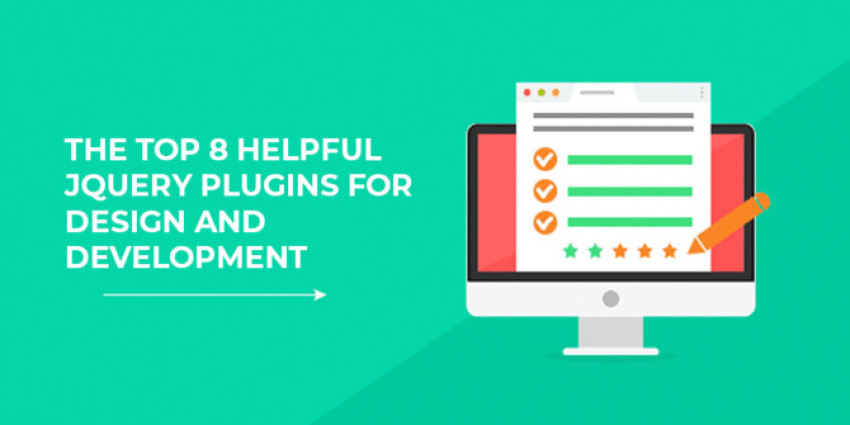
1) Pivotal Response
The Pivotal Response system is a great way to quickly increase user engagement by prompting users to respond immediately. It’s a quick, easy way to initiate interaction with users and keep them engaged with the content you provide. Use Pivotal Response in order to facilitate immediate responses from users. Create response prompts that require little time or effort on behalf of your visitors – just a click is all it takes to get a response! Once you have a response, use AJAX in order to deliver additional, related content based on that feedback. Immediate responses are crucial for building trust with your visitors, so it’s important that you utilize plugins like Pivotal Response that encourage engagement between visitors and site owners.jQuery development is an awesome, lightweight JavaScript library that has revolutionized the way we write JavaScript code and manipulate webpages on the client side.
2) NProgress
Progress bars are, in my opinion, one of those HTML5 design elements that have been sorely missing since I started designing websites. The good news is we can now enjoy them in our designs without having to rely on a third-party framework. NProgress is a simple jQuery plugin created by Dustin Diaz which implements a slim progress bar into our designs. You can choose between loading your own background or using one of their pre-made color schemes which have been generated using ColorCombos.me. And, if you're interested in changing your current theme to an understated design, look no further than NProgress!
3) Roundabout
This nifty tool makes it super easy to create a full-screen slideshow or web page background—and you don’t need any graphic design skills. Just enter in your HTML, CSS, and JavaScript, then add it to your website. One of Roundabout’s best features is that you can drag and drop files from your desktop into its interface to upload directly. Then, once everything is set up, you can export everything into an HTML file. This makes it simple to use on existing websites without needing too much technical knowledge on how to add a new feature.
4) Media Embedder
One of my favorite plugins is called Media Embedder. Media Embedder can embed videos, audio files, images, and even Flash animations into any web page. It features a simple way to include YouTube or Google Video feeds right into your site with a few simple steps. In order to use it on your site, you need to have access to an API key from both services. This can be obtained by setting up an account on their websites if you do not already have one. Once you have your API keys in place all that is left is selecting which elements you want to be included along with some variables such as height, width, and delay time if necessary.
5) Responsive Image Viewer
The floating action button (FAB) is a design element that has become increasingly popular with mobile app developers over recent years. Simply put, it is a circular icon that sits on a page or screen with an accompanying label or instructional copy. There are many different variations of FAB but most notably it will allow you to boost your conversions, helping you drive customers through various key stages of your funnel. These buttons have been shown to work well in just about any industry and can be applied to home pages, product pages, pricing pages, subscription pages, and more. The FAB UI kit offered by Google can be seen below
6) Isotope
Isotope is a user interface enhancement plugin that allows you to set up interactive layouts using a combination of CSS3, JavaScript, and media queries. The nice thing about Isotope is that it adapts to changes in screen size and orientation. So, if you’re creating a responsive site or an adaptive layout, Isotope will work perfectly with all sorts of devices. Creating some interactive elements on your page has never been easier. Take your design one step further by implementing Isotope into your project today!
7) MouseWheel Plugin
The mouse wheel plugin allows you to use a mouse wheel to control a feature. You can scroll up or down with your mouse wheel to zoom in or out of photos, pages, whatever! This is great when combined with responsive design (see our tutorial on responsive design). Plus, you don’t have to worry about building something yourself if you don’t want to: just get it from a plugin. The plugin also works on touch-enabled devices like smartphones. Check out a demo here. And click here to download it.
8) FAB (Floating Action Button)
A FAB is a specific type of floating button that usually has an icon, label, and/or other interactive elements. It’s great because it can be used as an add-to-cart button or login button on e-commerce sites. FABs are designed to provide a stronger call-to-action than a typical button without being too overwhelming. FABs give users an instant visual of what they should do next while also saving them time by making buttons more accessible (the user can click anywhere on the floating box). And unlike traditional buttons, FABs don’t require additional hover states or animations—they just work. In addition to helping boost conversions, these boxes can be used in lieu of horizontal navbars and hamburger menus.
With jQuery, you will have access to an array of plugins that make web development easier. These plugins range from ones like Sizzle which makes CSS queries much easier, all the way up to libraries like Bootstrap which allows you to build websites quickly and with less code. There are thousands upon thousands of plugins out there, but these eight are some of my favorites:




